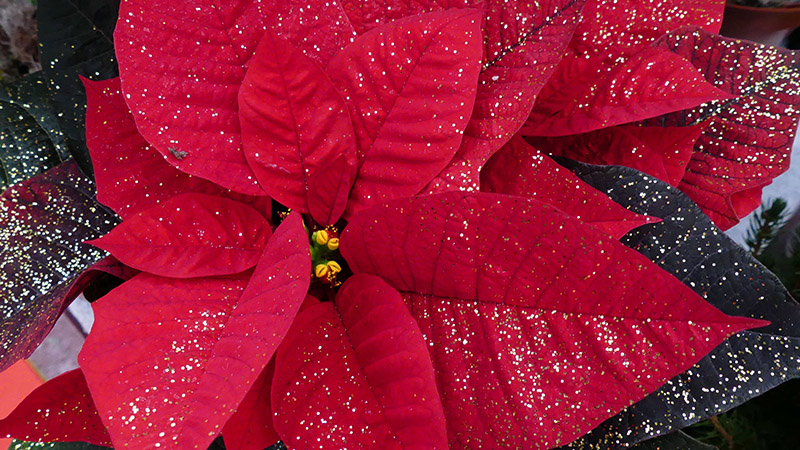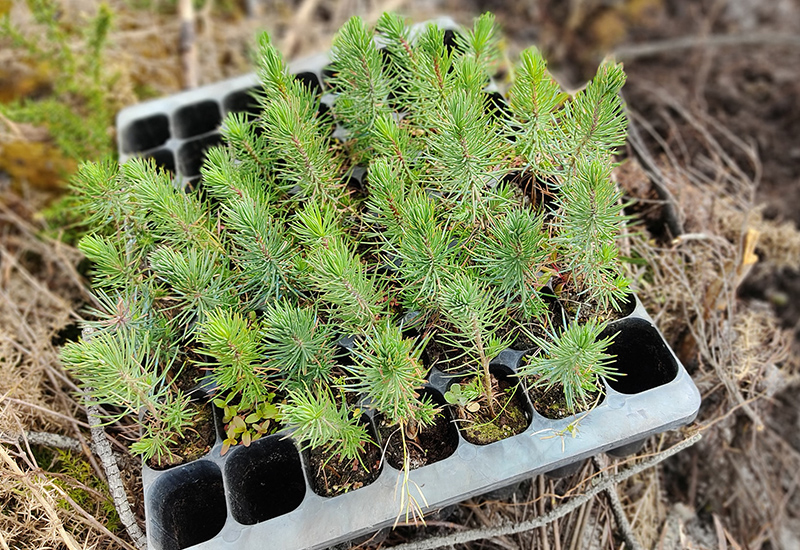By Tamsin Varley
Where has this year gone? There are now only a few weeks until Christmas and it’s time to think about creating that festive atmosphere in your homes. Plants are an easy way to achieve this.
Vying with the Christmas tree for the top spot is the poinsettia, which originally comes from Mexico and is synonymous with Christmas. The most widely available is red but they also come in shades of pink, white and even apricot. I found a red one sprayed with some gold glitter today which looks really festive. The large colourful bracts on the poinsettia are often mistaken for flowers, but they are in fact leaves.
White Christmas cactus Red Christmas cactus White poinsettia
The specialised flowers are called cyathia and are the tiny yellow clusters in the centre of the leaves. To ensure you choose a good quality plant, check out the cyathia as they should be tight and bud-like. Also, be careful buying plants from supermarkets where they may have been stored in a draught as this does not make a healthy plant and you may find it drops its leaves when you get it home.
To ensure your poinsettia flourishes, make sure you place it in a draught-free, sheltered spot with a minimum temperature of 15ºc. They prefer indirect sunlight to protect their leaves from burning but in the winter, a south-facing window would be fine. They do not like too much water and certainly do not like to sit in water. If in doubt, water a little but often rather than rarely and then soaking. They also like humid conditions so do mist them if the room gets very warm.
White Christmas cactusPink Poinsettia
Another fantastic plant for this time of year is the Christmas cactus. This is a succulent with flattened leaves that form hanging chains with flowers forming on the end of the terminal leaf. The flowers can be bright pink or white and are very eye-catching. To thrive, these plants need a shady spot – an east-facing window is ideal – and a temperature of around 18ºc. The soil should be kept moderately moist at all times and this plant also appreciates regular misting.
Winter-blooming cyclamen make beautiful Christmas plants for any room as even the heart-shaped leaves are attractive with their marbled patterns. These plants like bright indirect light and cooler conditions around 15ºc and no draughts. Water when the topsoil is dry to the touch. Place in a bowl of tepid water and allow the plant to soak it up and then drain well afterwards. If the leaves and flowers wilt, it is a sign of overwatering.
Flamingo flower
Cyclamen
Another spectacular red flowering plant is the flamingo flower with its unmistakable shiny heart-shaped leaves and long-lasting waxy red spathes with yellow spadices. This plant is a little more challenging than most but well worth the extra effort. It needs bright indirect light, high humidity and medium moisture so let it dry out a little between waterings.
Holly, of course, is closely associated with Christmas. I spotted some lovely pot plants with beautiful, variegated leaves today in a garden centre. They had been artfully arranged with some poinsettias and flamingo plants, so you could think about replicating that combination or a variation of it.
What do you do with the plants after Christmas? If you like a challenge, then Google your particular plant as there is a lot of information on the internet about keeping your plant and trying to get it to bloom the following year. However, most of these plants are relatively inexpensive to buy so you could toss them after the festive season and feel good about supporting the horticultural industry next year!
Tamsin Varley is a member of Clube Dos Bons Jardins, a small, friendly multi-national garden club that meets at different locations around the Algarve on the 2nd Tuesday every month except over the summer with an optional lunch afterwards.
algarvecbj@gmail.com





















